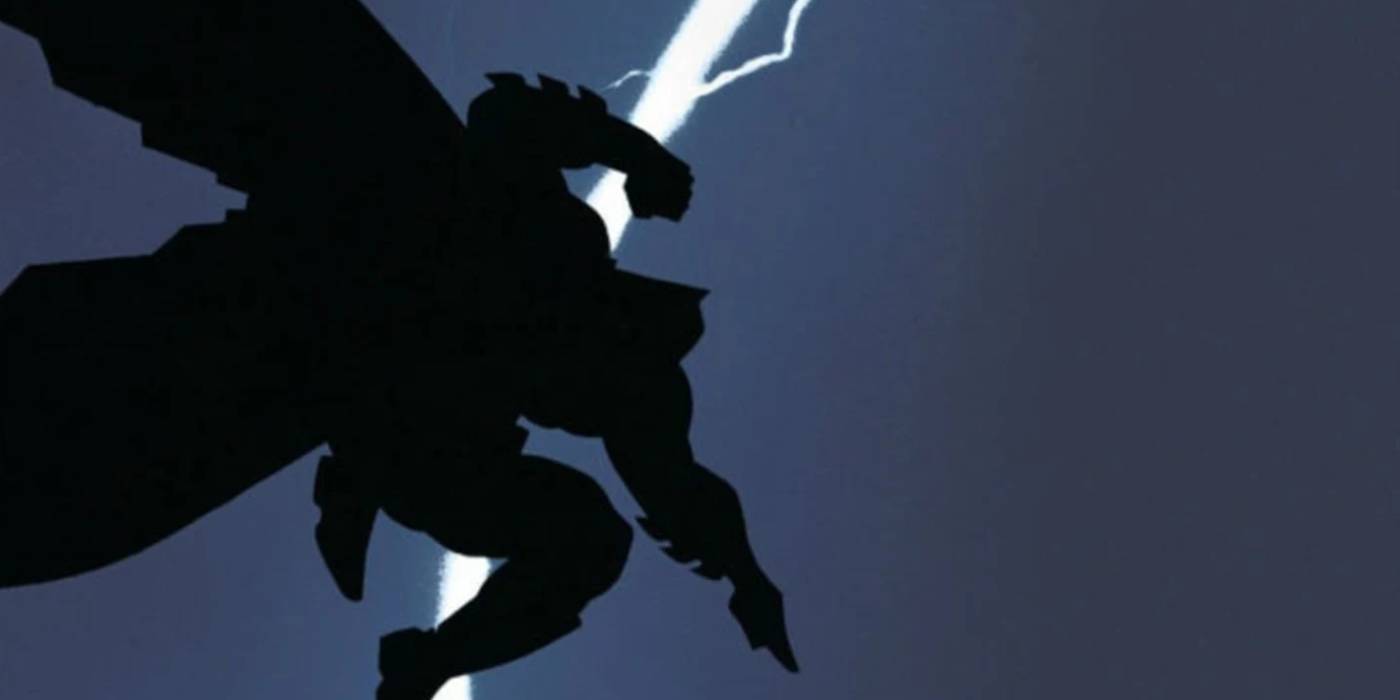
Frank Miller’s “The Dark Knight Returns” is often hailed as one of the top Batman comics ever made. It gave a new lease of life to Batman, breaking free from his Silver Age image that was associated with him since the 1960s “Batman” series. This image was more kid-friendly. The comic, released alongside “Crisis On Infinite Earths” and “Watchmen,” is one of the most impactful stories in its era. However, despite its immense popularity among Batman and comic book enthusiasts alike, it had an almost irreversible negative effect on the comic book industry that we’re still feeling today. I adore “The Dark Knight Returns,” but it almost brought ruin to the comics world.
The Dark Age of Comics
In essence, the term “Modern Age” in comic books is somewhat vague regarding its beginning, particularly when discussing Marvel Comics, but it’s more clearly defined for DC Comics. Generally speaking, most experts agree that the Modern Age commenced with the publication of three groundbreaking comics: “Crisis on Infinite Earths”, “Watchmen”, and “The Dark Knight Returns”. These comics were released within a year of each other and significantly altered DC’s comic book production methods. Importantly, “The Dark Knight Returns” and “Watchmen” initiated the “Dark Age” of comics, a period approximately spanning fifteen years at the onset of the Modern Age, from around 1986 to the beginning of the 2000s. Both these stories gained immense popularity due to their departure from the restrictions imposed by the Comics Code Authority, allowing them to explore darker themes and mature content that resonated with readers.
Although “The Dark Knight Returns” was groundbreaking, it seems that the broader comic book industry misinterpreted its success. The comic didn’t introduce new characters, but instead, it presented a grim, almost hopeless version of Batman, a hero who traditionally symbolizes hope amid adversity. This reimagining portrayed Batman as an aged warrior waging a seemingly futile battle. The narrative is set in a world perpetually on the brink of nuclear war, where the President declares Batman a criminal and sends Superman to capture him. The comic is also marked by excessive violence, bloodshed, and brooding characters swathed in too much leather. This grim tone paved the way for the over-the-top, edgy redesigns that characterized the 1990s, where heroes became more like agents of vengeance and rage, with an emphasis on leather, blood, and introspection.
In the ’90s, everything seemed excessively edgy, but “The Dark Knight Returns” was the comic book series that truly epitomized this trend. However, it was just a fleeting fashion. The true impact of “The Dark Knight Returns” lies in its introduction of the grimdark genre to superhero comics. Grimdark is a subgenre characterized by extreme violence, nihilism, and dystopian settings. Grimdark narratives are intentionally hopeless, portraying a world where hope is scarce and humanity’s nature as self-serving and untrustworthy. This genre, however, contradicts the very essence of superhero stories, which traditionally revolve around individuals standing up to fight evil and bring hope to people. Superheroes have always been about hope, yet since the publication of “Watchmen” and “The Dark Knight Returns,” there’s been an obsession with making superheroes as dark and gritty as possible, under the misconception that this is what made them popular. While there was some truth to this, many people have misunderstood the nature of “Watchmen,” which contains grimdark elements but is not fully grimdark. Nonetheless, the influence of “The Dark Knight Returns” has led many to believe that Batman is meant to be a dark avenger.
The trend of ultra-grim, disturbing comic books, which aim to rekindle the enchantment of “The Dark Knight Returns” by depicting a bleak world, has yielded some truly awful comics. This narrative, however, challenged the notion that comics were solely for children. Unfortunately, this challenge led many to believe that all adult superhero stories must be grimdark, which is illogical. Works like “The Boys,” “The Killing Joke,” and every Punisher comic since then, attempt to portray what mature comic books are supposed to look like. They do so by being excessively violent, sexually explicit, and blatantly telling the reader that things are terrible and will only get worse. While these stories may not be inherently bad because of this, those who persistently claim they are more sophisticated due to their grimness can be quite irritating. Furthermore, the belief that Batman cannot be a cheerful character or smile is significantly influenced by this comic book series.
I’m quite fond of “The Dark Knight Returns,” but since its debut, some people have been relentless in their insistence that all superhero comics should emulate it or they’re too simplistic. This assertion is preposterous, yet at times, it feels like the comic book industry itself endorses this viewpoint by continually promoting stories aiming to replicate “The Dark Knight Returns” with a focus on maturity. While it’s an exceptional tale in isolation, the impact it had on comics is largely unforgivable. Superhero narratives are intended to instill hope. They don’t necessarily need a happy ending or to save everyone, but they should foster hope. Sadistic stories like “The Dark Knight Returns” unfortunately led us down a path of producing far too many grimdark comics, which is regrettable.
https://comicbook.com/comics/news/batman-best-suits-ranked/embed/#
Read More
- Sony Removes Resident Evil Copy Ebola Village Trailer from YouTube
- Ashes of Creation Rogue Guide for Beginners
- Best Controller Settings for ARC Raiders
- Can You Visit Casino Sites While Using a VPN?
- Marvel Wants You to Believe Wolverine Is the Greatest Anti-Hero (But Actually He’s the Worst)
- Michael B. Jordan Almost Changed His Name Due to NBA’s Michael Jordan
- The Night Manager season 2 episode 3 first-look clip sees steamy tension between Jonathan Pine and a new love interest
- Lies of P 2 Team is “Fully Focused” on Development, But NEOWIZ Isn’t Sharing Specifics
- Crunchyroll Confirms Packed Dub Lineup for January 2026
- New Look at Sam Raimi’s Return to Horror After 17 Years Drops Ahead of Release: Watch The Trailer
2025-07-06 06:10